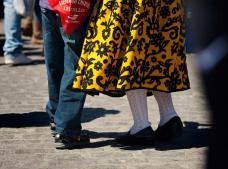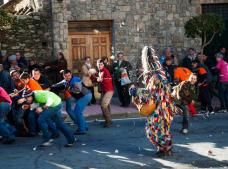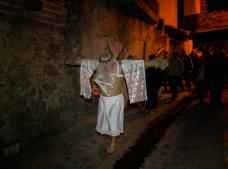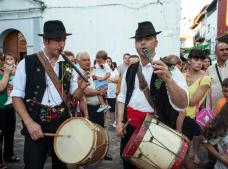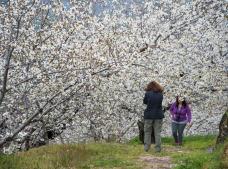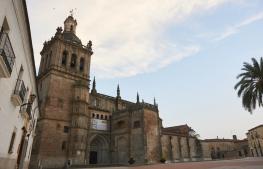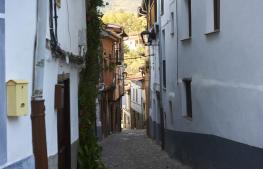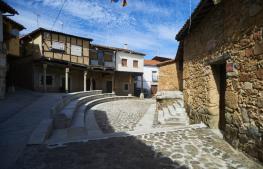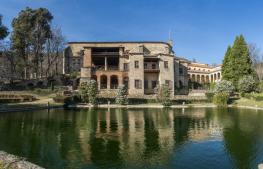Festivals of Tourist Interest
Centuries of folklore and popular culture
The province of Cáceres is home to one Festival of International Tourist Interest and two festivals declared as being of National Tourist Interest. The first, and most prominent, festival is Holy Week in Cáceres, followed by the Cherry Blossom Festival and Jarramplas. Cáceres’ Holy Week celebrations are a treat for the senses.
Its origins go back to the 15th century, and every year more and more people get involved, as is evident from the unstoppable growth in the number of members that make up each of the 16 associations that are the stars of the festivities.
The Cherry Blossom Festival is equally delightful.
The Jerte Valley gets covered in an amazing white blanket as millions of cherry trees blossom and the municipalities of the county of El Jerte celebrate this gift from nature, welcoming spring with all kinds of traditional folkloric events.
In addition, the Jarramplas festival in Piornal features an unusual character: a demon dressed in a multicoloured suit, who dances through the streets while locals throw turnips at him.
Las Carantoñas de Acehúche is another festival where men dress in animal skins, including masks covering their faces and heads, from which they hang peppers, animal ears, fangs, etc., after a promise made to Saint Sebastian.
Besides these festivals, there are also another 22 Festivals of Regional Tourist Interest. It would be impossible to recommend just one since each has a unique personality that makes it worth experiencing again and again, taking part in the spectacle put on by the local residents.
In the festival of Los Negritos de San Blas in Montehermoso, seven dancers, their faces blackened with burnt cork, dance to the sound of oak castanets. They dress in the typical attire of Montehermoso, with a military-looking hat called a ‘rocaol’. Among them is the ‘Palotero’, a burlesque character who carries an animal skin pouch with the equipment for the dances.
The festival of Peropalo is celebrated in Villanueva de la Vera on the eve of Carnival Sunday, representing the process of trying the accused. The ‘peropaleros’ create a life-size doll filled with straw, wearing a black suit, boots and hat, with a white handkerchief around its neck. The doll is attached to a strong pole that allows it to be lifted and carried through the town.
Dozens of municipalities in the province have been able to preserve ancient legends and rituals over the centuries. Los Escobazos is a festival repeated year after year in Jarandilla de la Vera. This is a popular demonstration combining rites and customs of both religious and pagan origin, that uses broom to create torches, known popularly as ‘escobones’, which the people then use to hit one another and then to light up the standard of the Virgin of the Immaculate Conception during the procession.
One colourful and spectacular event is the Arroyo de la Luz races, famous for their jockeys, who ride down the main street of Arroyo de la Luz at top speed, in tribute to its patron saint.
The Chíviri festival in Trujillo is celebrated at the end of Holy Week and features locals dressed in their traditional costumes dancing to traditional songs.
Religious festivals worth experiencing include Los Empalaos in Valverde de La Vera, representing the Way of the Cross; the Pilgrimage of San Isidro in Valencia de Alcántara; and La Encamisá, a procession that takes place on 7 December in Torrejoncillo. Other noteworthy Holy Week processions and associations are those of Plasencia and Trujillo, both worth visiting and experiencing first-hand.
Cáceres has an array of festivals for all tastes. Thousands of tourists visit every year for Carnival in Campo de Arañuelo, with parades featuring different groups, and Carnaval Hurdano, featuring more legends and local traditions and customs. ‘La Pedida de la Patatera’ coincides with the celebration of Shrove Tuesday. In this festivity, the young people of Malpartida de Cáceres celebrate Lent by going from house to house asking for ‘patatera’, a sausage made from pork, pork fat and potato purée, once considered economic, but today a cherished gastronomic legacy. During the Enramá festival in Pinofranqueado, the town’s young people are paired off, following a custom going back 150 years. For three days, the couples act as if they were real boyfriend and girlfriend, with traditions including the girls pinning the ‘enramá’ (small bunch of wild flowers) to the boys’ shirts and a typical dance.
For those with an interest in bulls, there is the six-day San Juan bull festival in Coria. Other Festivals of Regional Tourist Interest include the Festival of Hispanidad in Guadalupe; the Boda Regia of Valencia de Alcántara, a historical recreation where the entire town participates decked out in period dress; and Martes Mayor, a market held in Plasencia the first Tuesday in August that has been going strong for eight centuries.
Autumn is a magical time, celebrated with joy in the Otoño Mágico festival in the Ambroz Valley. What better way to honour the beautiful local landscape that appears during this season? Leisure, culture, nature and festive activities extend from the last weekend in October to the last weekend in November.
For gourmands, there is the Fiesta de la Tenca, held by the Tajo-Salor Association and focused on the tench fish, the star of the local gastronomy.
To round off the regional festivities, there is the Route of Charles V, a must for lovers of hiking and history. Follow in the steps of Holy Roman Emperor Charles V in his trip to the Monastery of Yuste, where he spent the final years of his life. Covering a distance of 25 kilometres, the route starts in Tornavacas and finishes in Jarandilla de La Vera, in the Jerte Valley.
Weather
Cáceres
11Dec

8 ºC
16 ºC
12Dec

10 ºC
12 ºC
13Dec

9 ºC
16 ºC
14Dec

9 ºC
16 ºC
15Dec

8 ºC
16 ºC
If you like Festivals of Tourist Interest you will like this too...
Coria Cathedral
Coria is the most important city in the north-eastern area of Cáceres, known for its rich historical and heritage value, including its cathedral.
Hervás Historical Site
Hervás is a town set in a privileged environment in the Ambroz Valley.
Cuacos de Yuste Historical Site
Back in 1959, the town of Cuacos de Yuste, in the county of La Vera, was declared an ‘Aesthetic Reserve’.
El Palancar Monastery
El Palancar Monastery is located in the town of Pedroso de Acim, very close to the Sierra de Cañaveral mountains and the Jerte and Alagón Valleys.
More things you can find in Cáceres
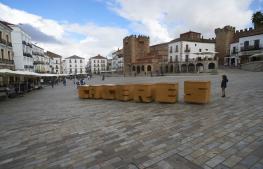
Old Town of Cáceres
The decree declaring Cáceres as a Monumental Site was published on 21 January 1949, and in 1986 UNESCO included the Old Town of Cáceres in its list
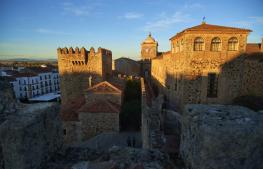
Monumental city of Cáceres
The topography plays an important role in the urban development of Cáceres, as the city stands on uneven ground, between the Sierra de la Mosca mou

